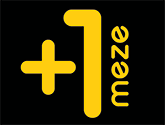
In our experience, the accounting for SaaS (and other cloud computing) arrangements is of increasing importance given their growing prevalence. SaaS accounting considers the recurring revenue generation from subscription-based billing when preparing these company’s financial statements. Since SaaS accounting can be intimidating, most businesses use cloud-based SaaS accounting software to handle their financial reporting and statements. With cash-basis accounting, revenue and expenses are recorded only when money owed is paid or received, which means that there are no accounts payable or receivable accounts.

Download our “The Ultimate Accounts Payable Survival Guide” to learn how your growing business can automate its global payables and payments. Understanding the nuances of revenue recognition in SaaS accounting is fundamental for accurate financial reporting and analysis. This knowledge helps SaaS businesses present a true picture of their financial health to stakeholders and make informed strategic decisions.
What is SaaS accounting?
The share of the value assigned to a month equals the share of the billing period that falls into this month. This means that there aren’t really separate performance obligations — rather one continuous performance obligation. In a non-SaaS world, performance obligations can be more complex as the customer is owning the product outright with a perpetual license.
- So far, we have seen how cash and accrual accounting dictates ‘when’ to record transactions.
- From revenue recognition to understanding R&D vs customer service costs, SaaS business founders rely on tons of metrics to run their business.
- ASC 606 and its sister standard IFRS 15 bring a set of structured guidelines for recognizing revenue — here’s what every SaaS business needs to know to meet the deadline and get compliant.
- Whether you need a service that manages your every financial function, a senior finance expert to put together budgets and projections, or advice on filing your annual tax return, Zeni’s complete solution has you covered.
- The good news is that Kruze’s team is familiar with all flavors of Software as Service business models, and we can support your financials and metrics whether you sell to Fortune 500’s or to consumers.
- Each method offers its unique perspective and can significantly impact a SaaS company’s financial reporting and analysis.
That’s a massive drop in ARR, likely driven by hedge funds moving into the market and bidding aggressively to lead Series B’s. It makes sense that the revenue growth would go up on a smaller ARR base, so at least there is some rationality at the Series B vs. the Series A and Seed numbers we referenced above. Once again, we’d expect that the ARR hurdle would increase in early 2022 as the funding market may be cooling. With hundreds of clients who have raised billions of dollars in VC funding, we know what revenue a SaaS company needs to raise a seed, A or B round. Keep in mind that financing for these types of startups is usually based on a number of factors, not just revenue size – in particular, revenue growth matters as well. But getting started from day-one will set you on the right path for success in this quickly growing industry.
Who regulates accounting standards?
Accrual basis accounting records revenue and expenses in the order in which they occur rather than in the order in which they are paid or received. This approach works well for large corporations and SaaS companies that derive revenue from subscriptions. Some ERP systems like saas accounting rules NetSuite and Sage Intacct provide excellent revenue recognition features and use financial data for SaaS metrics or KPIs to measure results. You may find that specialized ASC 606 add-on software for revenue recognition fills gaps in your accounting software capabilities.
ASC 606 is the standard accounting guidelines developed jointly by the FASB and International Accounting Standards Board (IASB). QuickBooks Online software can integrate with other corporate tools and apps like CRM systems and payment processors via the QuickBooks app library. The Software as a Service (SaaS) industry has grown exponentially over the past few decades.
Strive for GAAP-compliant financial management
In a nutshell, bookings signify the commitment from your customers to pay you money for the service you provide. In some SaaS arrangements, the SaaS provider may perform implementation services in addition to providing the SaaS. In that case, a customer should assess the implementation services and determine whether they are distinct from the SaaS.
- The accounting process for a SaaS business, like any business, is a collection of recurring workflows to maintain both timely and accurate record keeping.
- SaaS accounting teams need solid processes and systems in place to manage incoming invoices, review them, and approve/pay them.
- Under the GAAP matching principle, costs and expenses are matched for recognition in the same accounting period as related revenues.
- When a customer signs up for a service they agree to a certain payment schedule, usually annually, semi-annually, or monthly.
- The Financial Accounting Standards Board decided to pursue targeted improvements to its rules for accounting for and disclosing software costs, instead of a single overarching model.
- But before we do that, it’s worth looking at some criteria for revenue recognition.
There are specific requirements and challenges to operating a SaaS business, and the financial intricacies of these businesses are also specific. The subscriptions that power SaaS businesses make it complicated for financial professionals to apply traditional accounting rules, taxes, commissions and contracts in their work. Therefore, it’s important that your finance team ensures that your forecasting and reporting are fully accurate and compliant with the appropriate tax rules and laws in your jurisdiction.
